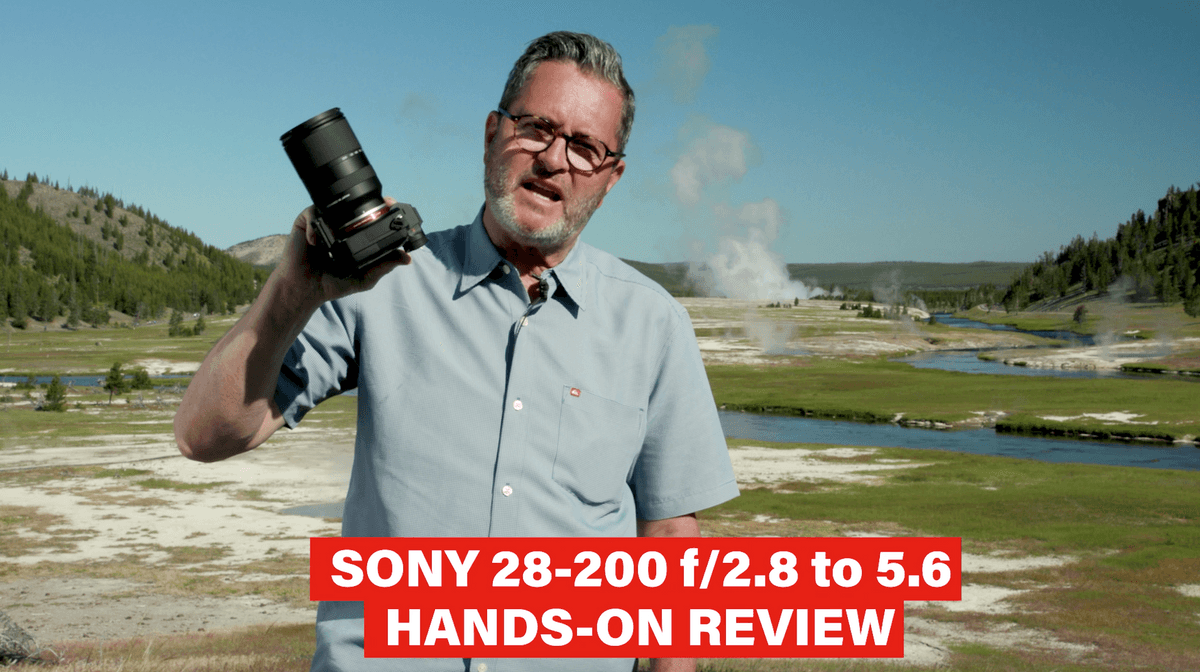 The Tamron 28-200mm Lens for Sony may be the best all-around video and still lens out there. In this review we show it in use while we shoot a variety from macro photography to wide scenics to telephoto wildlife shots. Take a look and see how it performs.
The Tamron 28-200mm Lens for Sony may be the best all-around video and still lens out there. In this review we show it in use while we shoot a variety from macro photography to wide scenics to telephoto wildlife shots. Take a look and see how it performs.
We’re out here in Yellowstone, taking a look at the new 28-200mm Tamron lens for Sony mount doing a hands on review. We have had a great time here shooting with the new 28-200mm, 2.8 f/5.6 lens from Tamron for Sony. This is a great lens for shooting so many things here in Yellowstone. It’s so nice that you have a 28mm which is a very wide view. 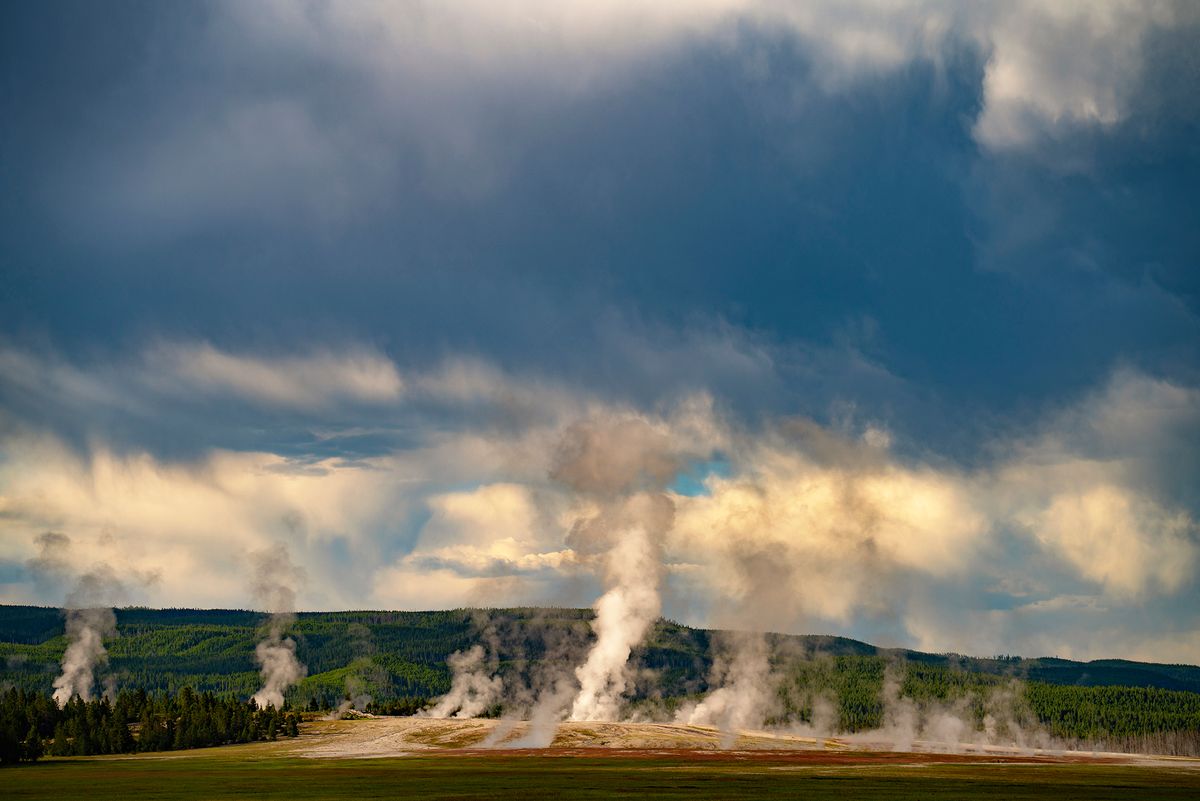 Great for these kinds of scenics. Then with the 200mm I got some great shots of Buffalo, which worked out fabulously because it goes to a telephoto at that point of 200mm.
Great for these kinds of scenics. Then with the 200mm I got some great shots of Buffalo, which worked out fabulously because it goes to a telephoto at that point of 200mm.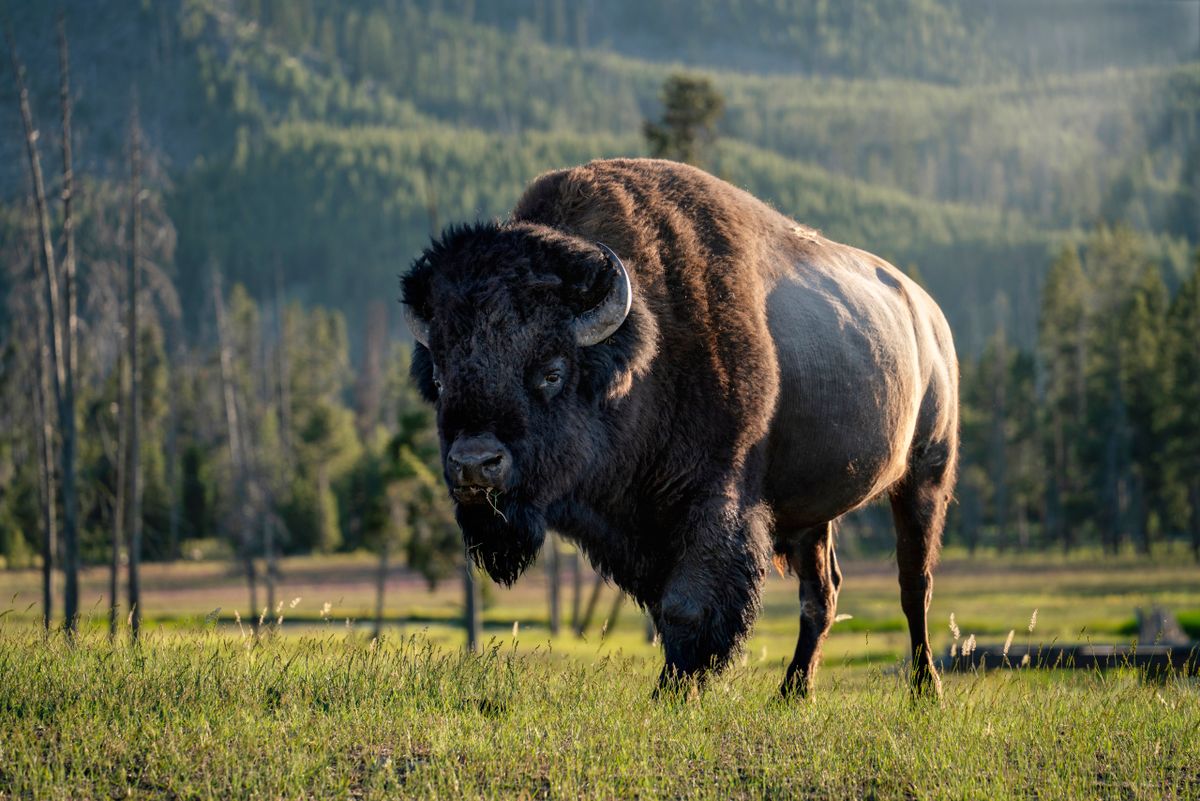
Because this is a native Sony mount lens you’re going to get all the features you expect from a Sony like eye tracking and the autofocus is going to function perfectly. That’s really what this lens is about. You will be able to use everything that your Sony camera offers in regards to autofocus and it’s built to work with this lens as well.
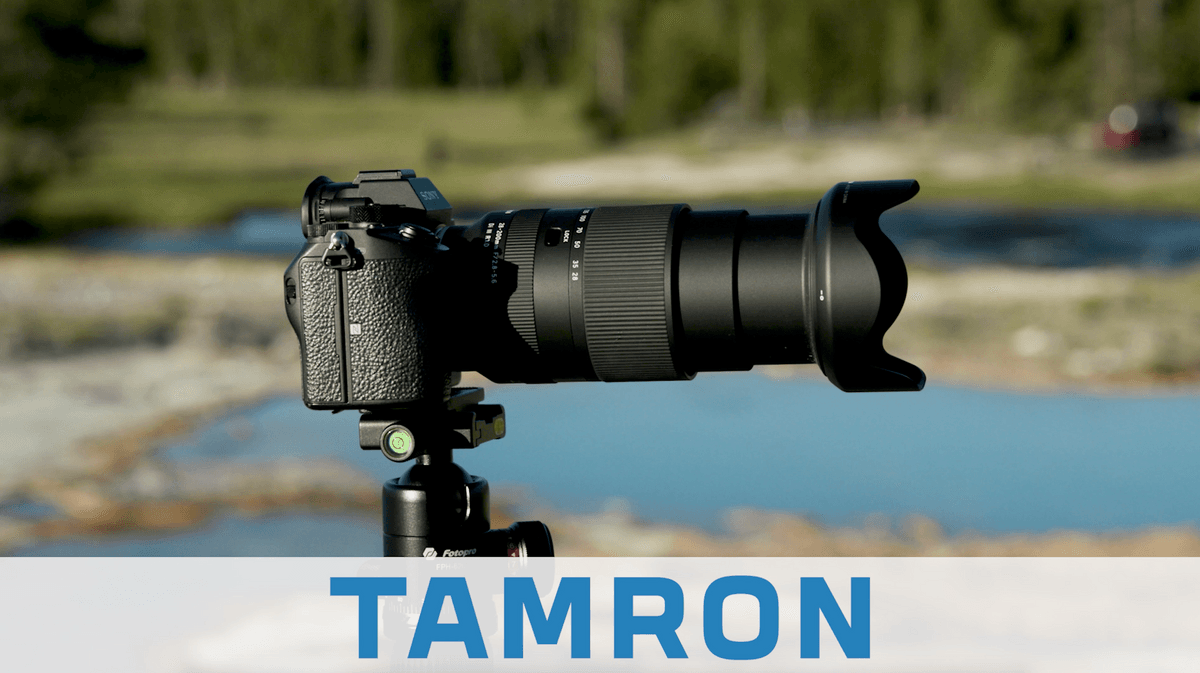 So they take a lot of things off from the lens like autofocus buttons and that accessed internally in the menu of the Sony. That really makes things much more streamlined and it really gives you a small form factor that you can carry with you. And it matches the mirrorless camera. I think that is the genius of this entire series and I think this becomes a capstone because this becomes the lens you carry with you when you walk around.
So they take a lot of things off from the lens like autofocus buttons and that accessed internally in the menu of the Sony. That really makes things much more streamlined and it really gives you a small form factor that you can carry with you. And it matches the mirrorless camera. I think that is the genius of this entire series and I think this becomes a capstone because this becomes the lens you carry with you when you walk around. 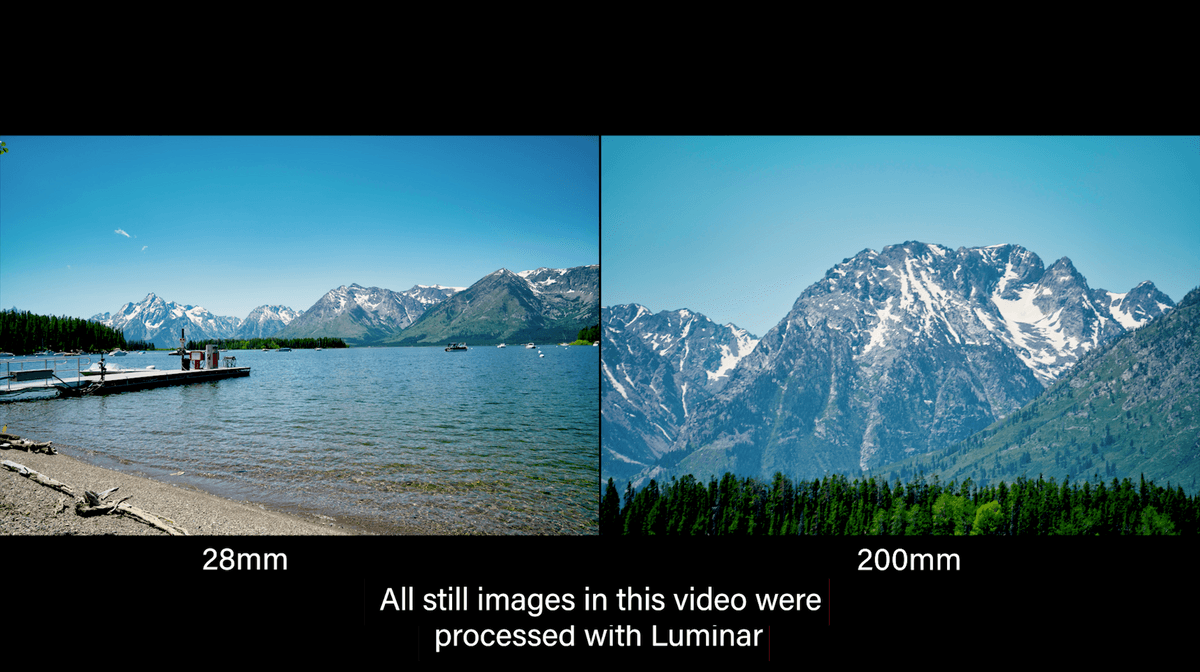 You know, when I’m walking around and shooting, we’re walking through the geysers walking on the trails, it just gives me a great wide vista lens to a really great telephoto lens. So these lenses are designed for full frame and you can put them on an APS C sensor, which is going to give you like a 40 to almost a 300mm lens on that APS C, which is fabulous.
You know, when I’m walking around and shooting, we’re walking through the geysers walking on the trails, it just gives me a great wide vista lens to a really great telephoto lens. So these lenses are designed for full frame and you can put them on an APS C sensor, which is going to give you like a 40 to almost a 300mm lens on that APS C, which is fabulous.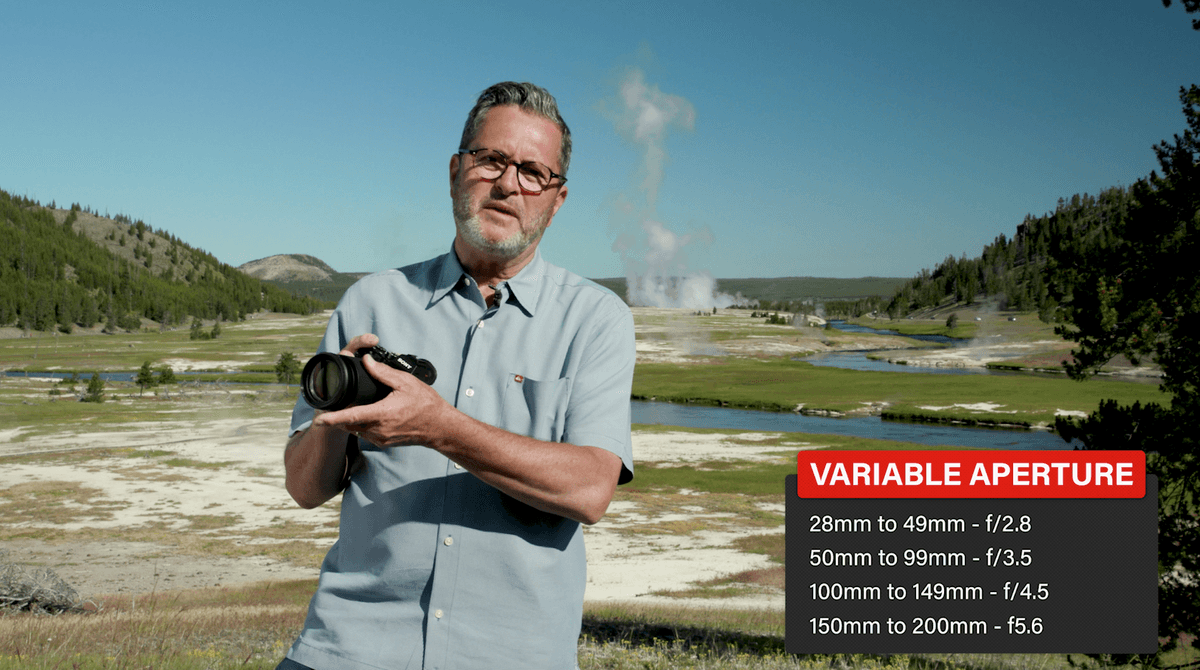
It’s really important to understand the variable aperture when you buy a lens like this, at 28mm I’m at f/2.8. Then when I go to 50mm I’m going to be at f/3.5. When I go to 100mm it is going to go to f/4.5. When I go to 150mm and above it’s at f/5.6.
When I’m working outside with the lens and it has a variable aperture, a lot of times I’ll put the camera on aperture priority and I’ll put it at f/2.8. It will automatically go to that f/5.6 as I go to 200mm. 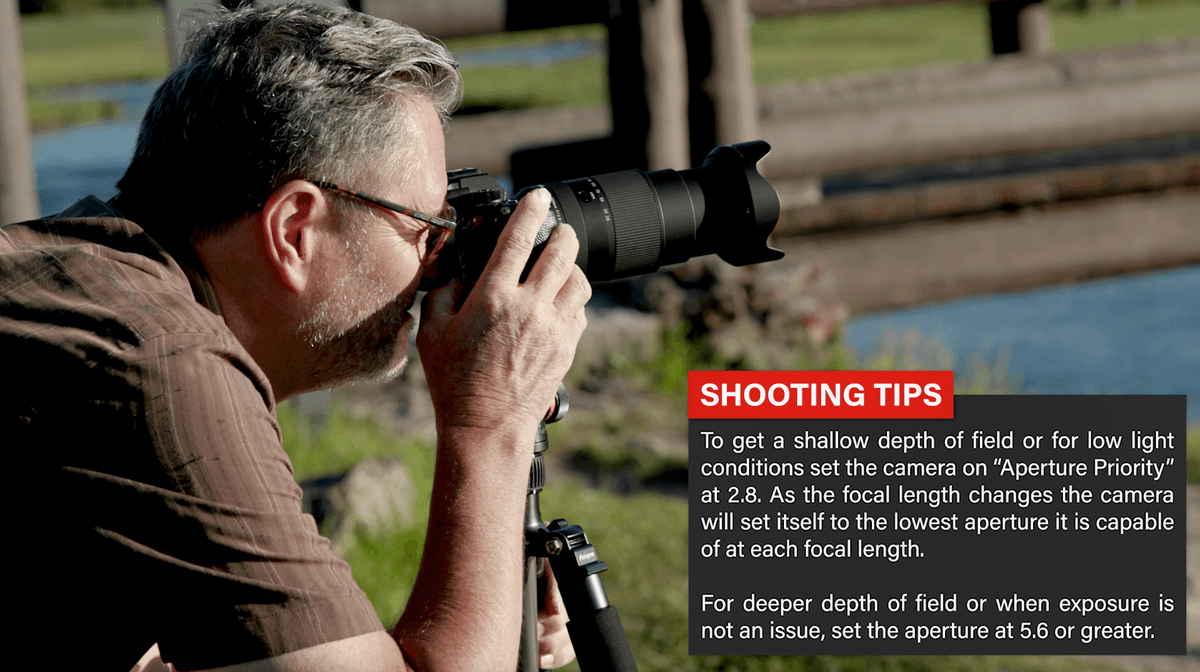 Then when I come back to 28mm it is going to go to f/2.8. So either that or I will set it at f/5.6 because I’m doing scenics and I need depth of field here. I’m not worried about being wide open, I got plenty of light and I’m in the sun. I’ll set it at f/5.6 and on aperture priority and then I’ll let the shutter track. That just is a very easy way to use a variable aperture lens.
Then when I come back to 28mm it is going to go to f/2.8. So either that or I will set it at f/5.6 because I’m doing scenics and I need depth of field here. I’m not worried about being wide open, I got plenty of light and I’m in the sun. I’ll set it at f/5.6 and on aperture priority and then I’ll let the shutter track. That just is a very easy way to use a variable aperture lens.
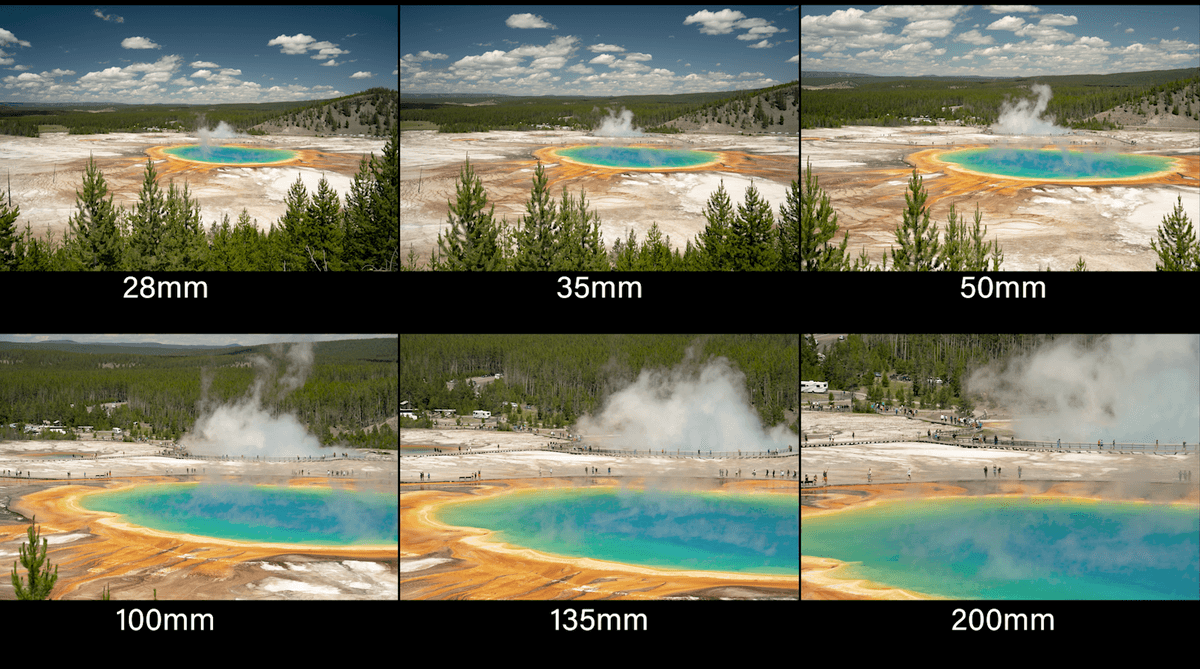 I got some great shots at the Midway Geyser Basin. The orange and blues were so beautiful and I shot a range. There’s 28mm and then I cropped in. I went from 28mm to 35mm to 50mm to 100mm, 135mm and 200mm. So there are those images in a row so you can see how that telephoto reaches out and isolates. I love how close this lens focuses. When you’re at 28mm you are really 7.5 inches from the sensor to your subject. Which means you’re right on top of your subject and it allows you to focus that close.
I got some great shots at the Midway Geyser Basin. The orange and blues were so beautiful and I shot a range. There’s 28mm and then I cropped in. I went from 28mm to 35mm to 50mm to 100mm, 135mm and 200mm. So there are those images in a row so you can see how that telephoto reaches out and isolates. I love how close this lens focuses. When you’re at 28mm you are really 7.5 inches from the sensor to your subject. Which means you’re right on top of your subject and it allows you to focus that close. 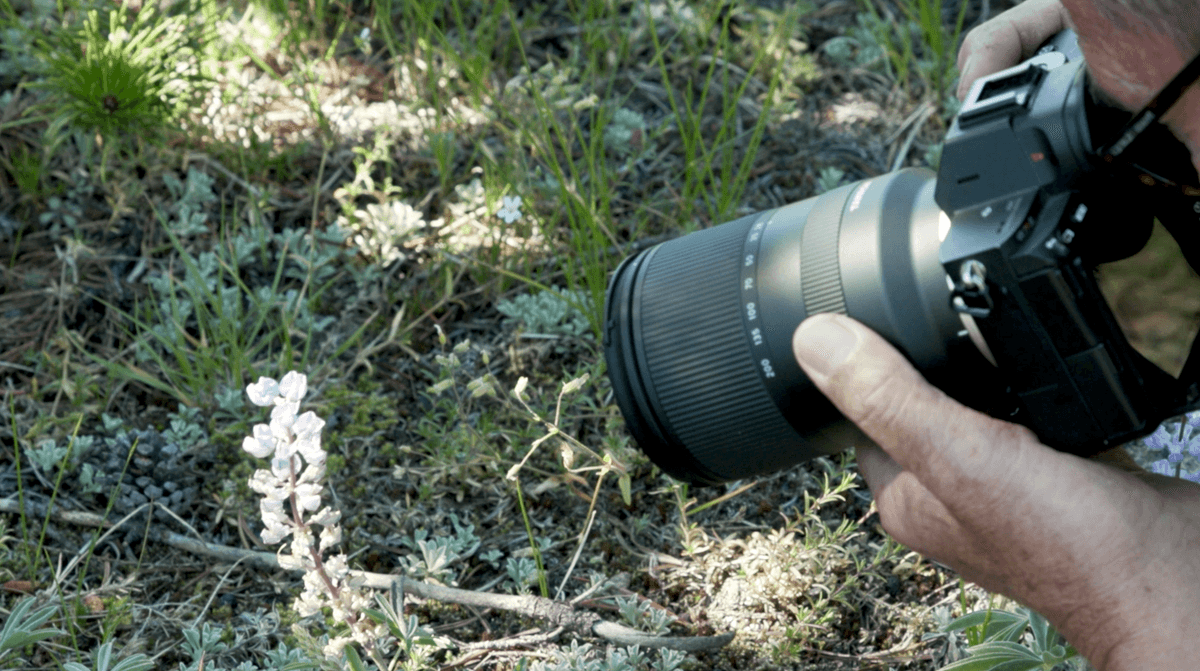 It gives you great close up magnification. You can go from 1:3.1 magnification with that 28mm range. You don’t get that 200mm, obviously, your focusing distance is going to be a lot further. But that’s fabulous at that 28mm end.
It gives you great close up magnification. You can go from 1:3.1 magnification with that 28mm range. You don’t get that 200mm, obviously, your focusing distance is going to be a lot further. But that’s fabulous at that 28mm end. 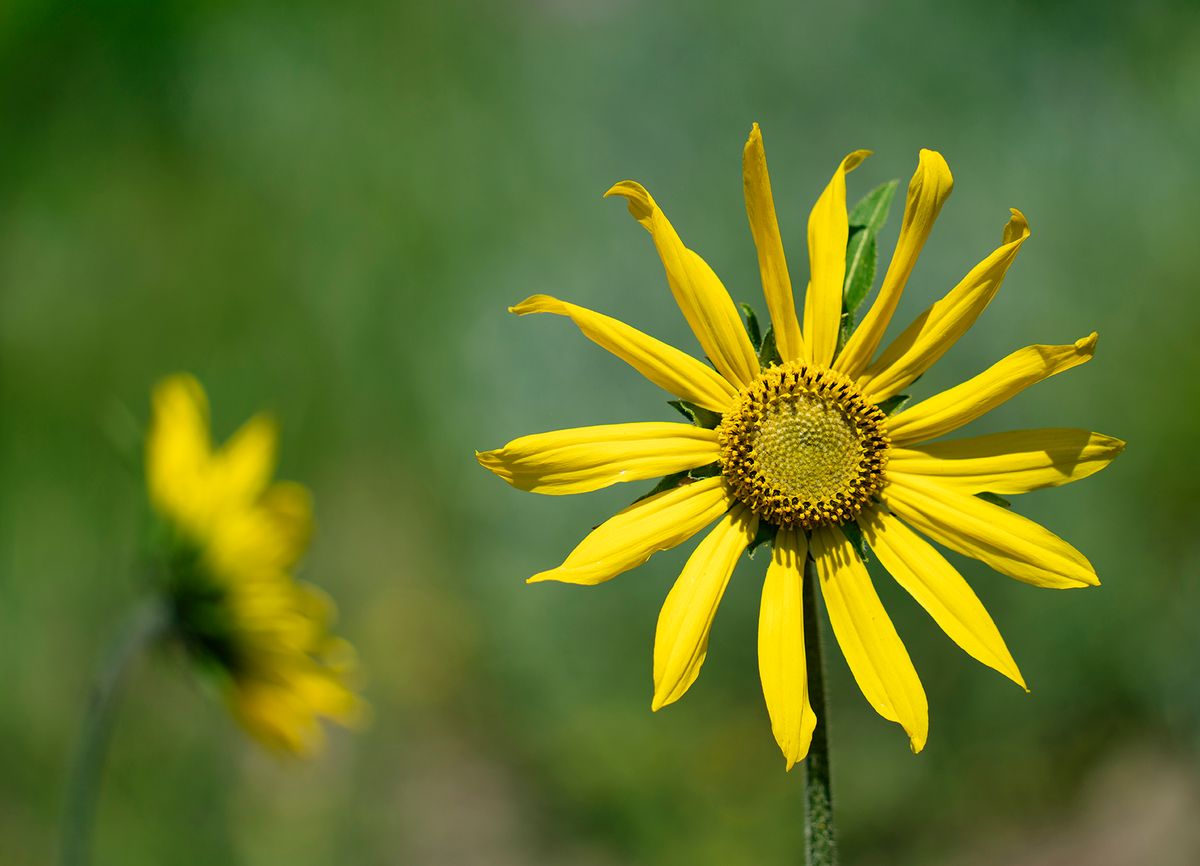 We’ve been concentrating on scenics out here, but the reality is, this is a great walk around video and still lens. I think this really gives you a lot more options because you’ve got 28-200mm. And even though you’re going to f/5.6 you can get a very shallow depth of field with that 200 at f/5.6.
We’ve been concentrating on scenics out here, but the reality is, this is a great walk around video and still lens. I think this really gives you a lot more options because you’ve got 28-200mm. And even though you’re going to f/5.6 you can get a very shallow depth of field with that 200 at f/5.6.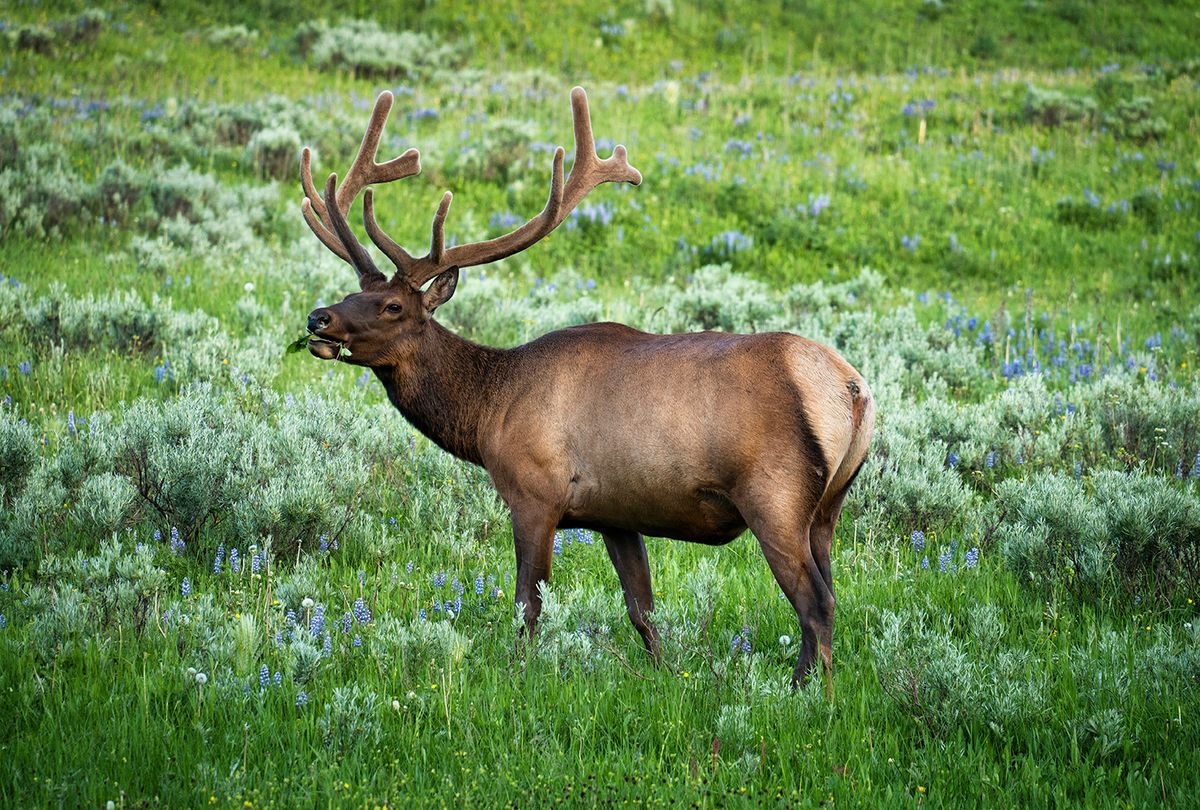
It gives you a great stacking with people when you are doing video. This is a great video lens as well. It works great with video application. My experience, and here’s some of the images, it that this is very sharp lens. Even throughout that entire zoom, it’s a very sharp lens. They have elements that are made to be able to control chromatic aberration. It just gives you a very, very sharp image from edge to edge.
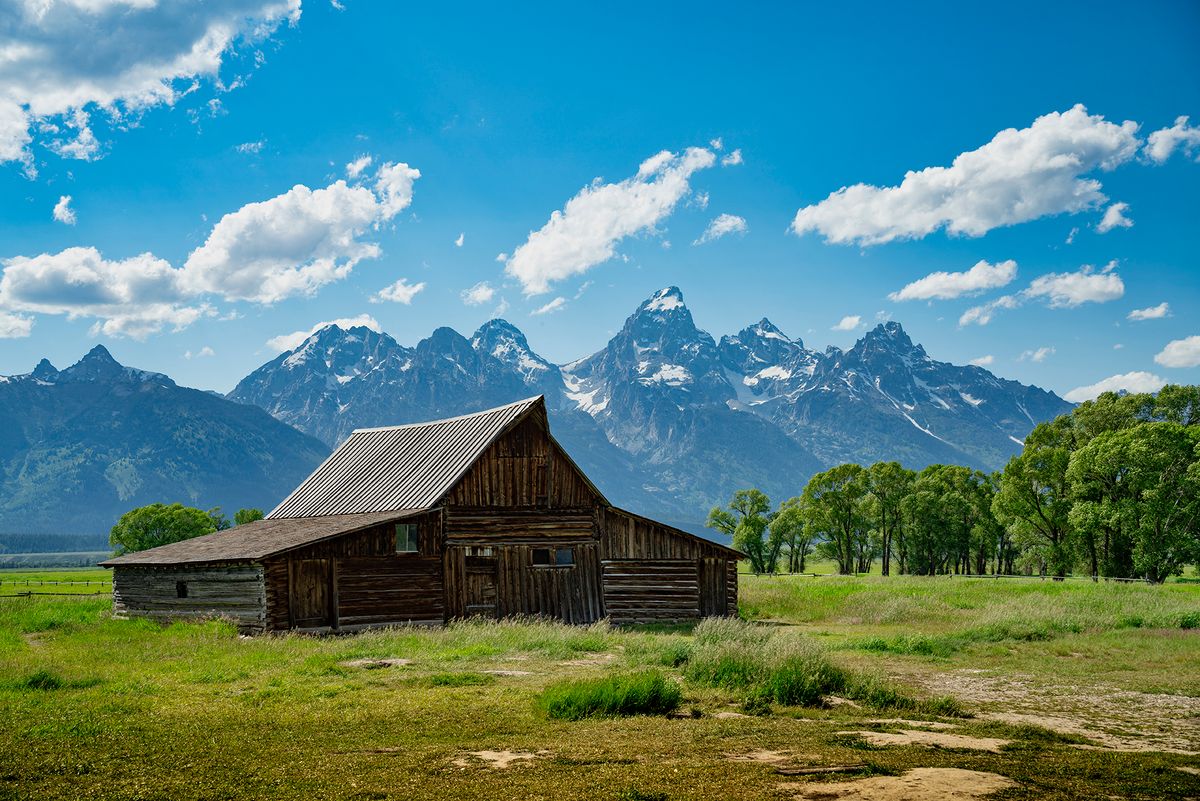 I think this lens just is about versatility. It gives you so many different options, everything from that 28- 200mm which gives you landscapes to telephoto, great vistas to more tight animal shots. But also versatility with regards to focusing distance. It allows you to get in tight on things, at 7.5 inches at 28mm. It gets you right on top of things when you’re doing macro photography. And you can put this lens in your bag and easily carry it around. And as you take it out on a day when you’re not sure exactly what you’re going to encounter, it gives you so many different options so you can cover whatever you’re going to see.
I think this lens just is about versatility. It gives you so many different options, everything from that 28- 200mm which gives you landscapes to telephoto, great vistas to more tight animal shots. But also versatility with regards to focusing distance. It allows you to get in tight on things, at 7.5 inches at 28mm. It gets you right on top of things when you’re doing macro photography. And you can put this lens in your bag and easily carry it around. And as you take it out on a day when you’re not sure exactly what you’re going to encounter, it gives you so many different options so you can cover whatever you’re going to see.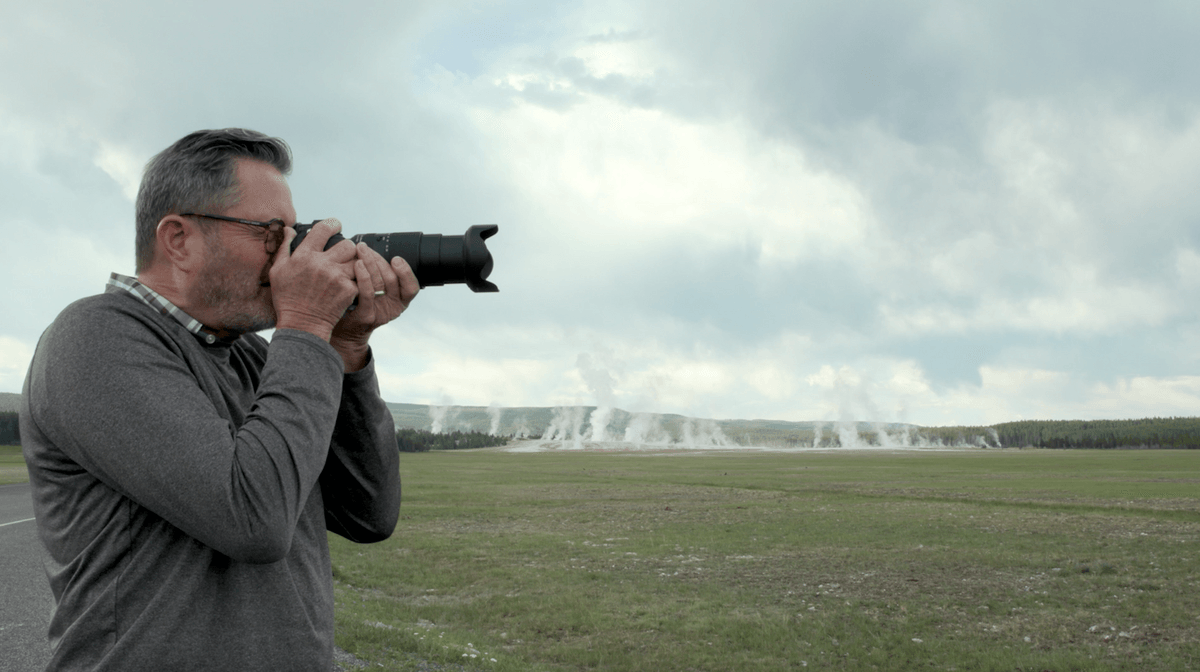
The only downside for me is that f/5.6 and that’s a small compromise when you really get it into a body size like this that is so lightweight and so compact. And also you get that great range of 28-200mm. I think that 5.6 is a very small compromise to be able to make that work. And I found that really it’s not an issue because when I’m shooting scenics f/5.6 is fabulous.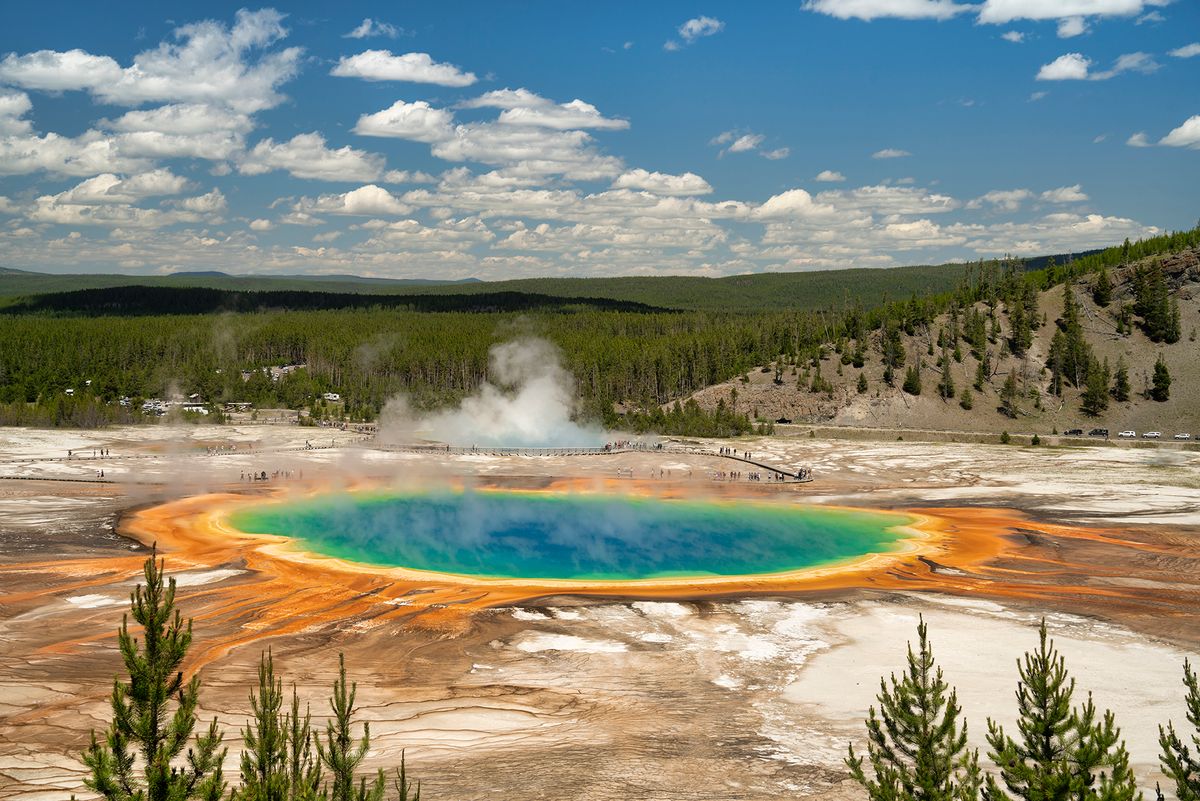
If I’m in low light, I go to 28mm and I go to f/2.8. So it gives me great options. There’s not very many lenses that have gotten that range that are going to give f/2.8 on the wide end. They usually go to f/4. This Tamron lens gives you f/2.8 which gives you great, fast versatility in low light. If you have some thoughts about the new 28-200mm lens, leave them in the comments on our YouTube channel. Let us know what you think.
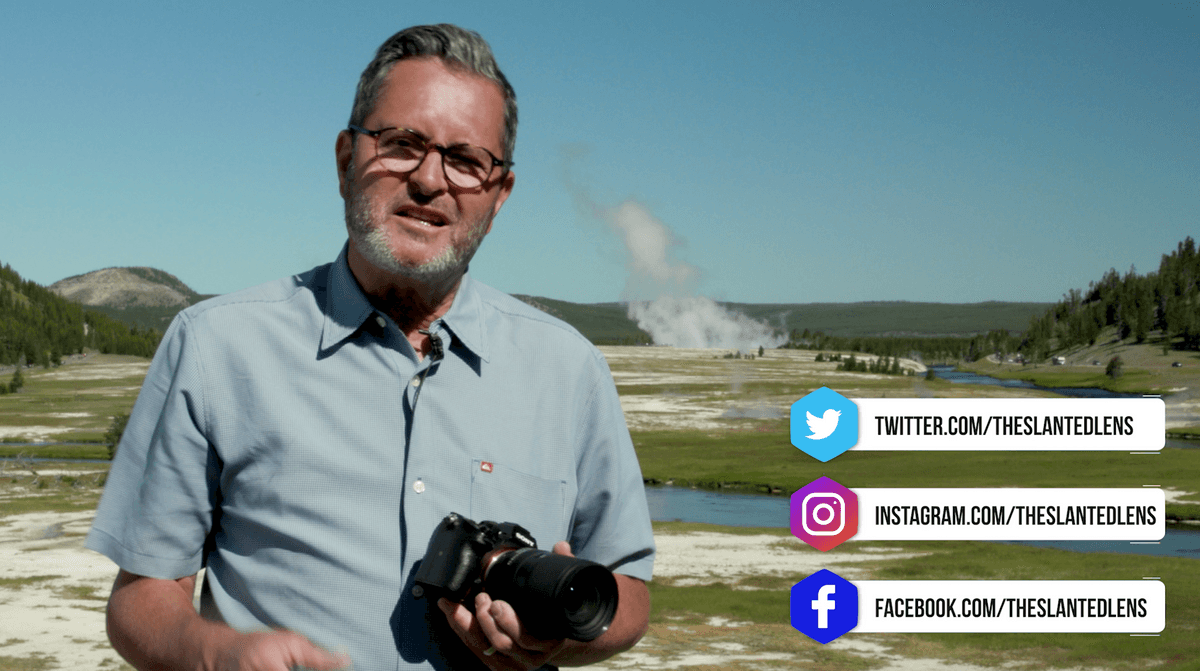 Also subscribe to our channel. Don’t come and leave without subscribing. We want you to be a part of our family. So keep those cameras rollin’ and keep on clickin’.
Also subscribe to our channel. Don’t come and leave without subscribing. We want you to be a part of our family. So keep those cameras rollin’ and keep on clickin’.
We edited our images for this review using Luminar. Check out Luminar for your image editing: $10 off Luminar by Skylum https://macphun.evyy.net/c/2073517/645023/3255 Use Discount Code: LuminarTSL10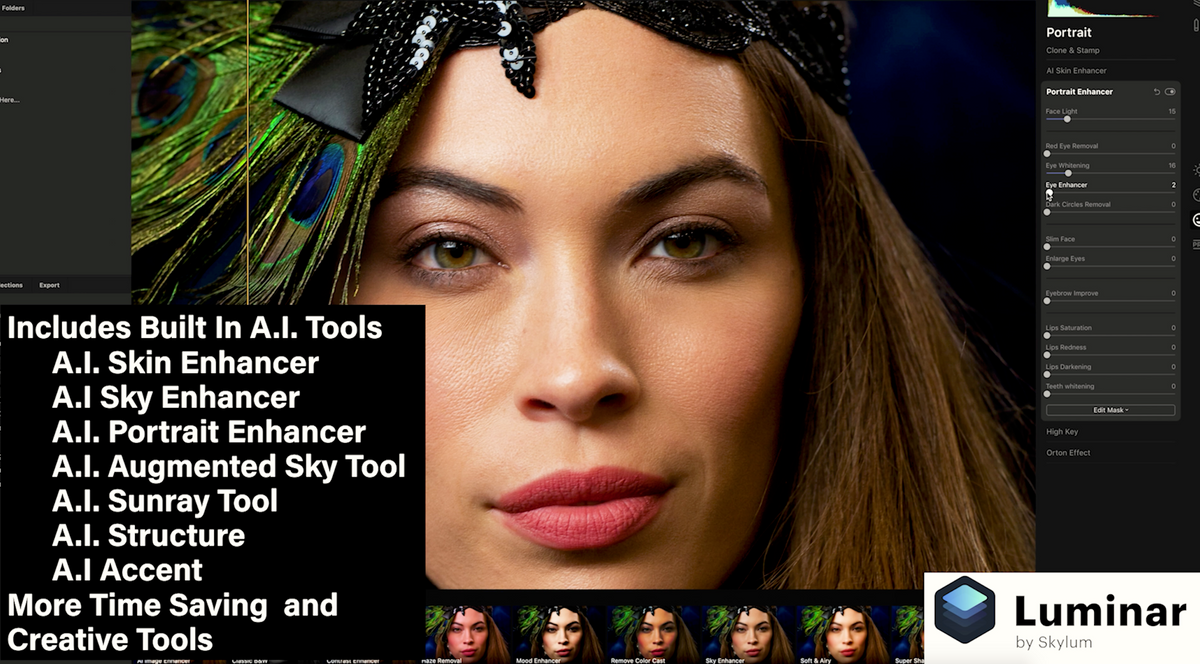
Leave a Reply